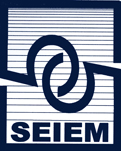Understanding the Solution Set of Linear Inequalities in Two Variables to Propose a Genetic Decomposition
DOI:
https://doi.org/10.35763/aiem27.6017Keywords:
Comprehension, Inequalities, APOS, Genetic decomposition, Bachelor's degreeAbstract
The objective of this research is to analyze the understanding of a group of students in order to propose a Genetic Decomposition (GD) on the solution set of a linear inequality in two variables (SSLITV). We employ the APOE Theory (Action, Process, Object, and Scheme) as a theoretical and methodological framework. Three undergraduate mathematics students participated, selected based on their good academic performance. For data collection, we conducted three virtual sessions that were recorded using Google Meet; during these sessions, participants solved and discussed nine tasks. The findings revealed that students graphically represent the SSLITV by constructing three types of processes: utilizing points, rays, or generalizing properties from to . Furthermore, we found that they conceptualize the SSLITV as an area or region where some points satisfy the inequality. Lastly, we recommend further research to expand upon the proposed GD.
Downloads
References
Abramovich, S., & Connell, M. L. (2015). Digital fabrication and hidden inequalities: Connecting procedural, factual, and conceptual knowledge. International Jour-nal of Technology in Teaching and Learning, 11(2), 76–89. https://eric.ed.gov/?id=EJ1213420
Arcavi, A., & Isoda, M. (2007). Learning to listen: From historical sources to class-room practice. Educational Studies in Mathematics, 66(2), 111–129. https://doi.org/10.1007/s10649-006-9075-8
Arnon, I., Cottrill, J., Dubiski, E., Oktaç, A., Fuentes, S., Trigueros, M., & Weller, K. (2014). APOS theory: A framework for research and curriculum development in mathematics education. Springer. https://doi.org/10.1007/978-1-4614-7966-6
Betancur, A., Fuentes, S. R., & González, M. P. (2022). Construcciones mentales aso-ciadas a los eigenvalores y eigenvectores: Refinación de un modelo cognitivo mental. Avances de Investigación en Educación Matemática, 22, 23–46. https://doi.org/10.35763/aiem22.4005
Blanco, L. J., & Garrote, M. (2007). Difficulties in learning inequalities in students of the first year of pre-university education in Spain. Eurasia Journal of Mathe-matics, Science and Technology Education, 3(3), 221–229. https://doi.org/10.12973/ejmste/75401
Çekmez, E. (2021). Investigating the effect of computer-supported instruction on students’ understanding of different representations of two-variable inequal-ities. Interactive Learning Environments, 31(6), 3305–3325. https://doi.org/10.1080/10494820.2021.1926288
Dubinsky, E. (1991). Reflective abstraction in advanced mathematical thinking. In D. Tall (Ed.), Advanced mathematical thinking (pp. 95–126). Springer. https://doi.org/10.1007/0-306-47203-1_7
Martínez-Planell, R., & Trigueros, M. (2019). Using cycles of research in APOS: The case of functions of two variables. Journal of Mathematical Behavior, 55, 100687. https://doi.org/10.1016/j.jmathb.2019.01.003
Moon, K. (2019). Graphs of two variable inequalities: Alternate approaches to the solution test. Mathematics Enthusiast, 16(1–3), 107–126. https://doi.org/10.54870/1551-3440.1452
Moon, K. (2020). New approaches for two-variable inequality graphs utilizing the Cartesian Connection and the APOS theory. Educational Studies in Mathematics, 104(3), 351–367. https://doi.org/10.1007/s10649-020-09956-1
Rodríguez-Jara, M. A., Lorca-Mena, A., Lorca-Mena, J. J. F., Vásquez-Saldias, P., & Leo, M. D. V. (2019). Construcción cognitiva del conjunto solución de un siste-ma de ecuaciones lineales con dos incógnitas. Enseñanza de las Ciencias, 37(1), 71–92. https://doi.org/10.5565/rev/ensciencias.2194
Sangwin, C. J. (2015). Inequalities, assessment and computer algebra. International Journal of Mathematical Education in Science and Technology, 46(1), 76–93. https://doi.org/10.1080/0020739X.2014.941424
Switzer, M. (2014). Graphing inequalities, connecting meaning. The Mathematics Teacher, 107(8), 580–584. https://doi.org/10.5951/mathteacher.107.8.0580
Tsamir, P., & Almog, N. (2001). Students’ strategies and difficulties: The case of algebraic inequalities. International Journal of Mathematical Education in Sci-ence and Technology, 32(4), 513–524. https://doi.org/10.1080/00207390110038277
Downloads
Published
How to Cite
Issue
Section
License
Copyright (c) 2025 Adrian Muñoz Orozco, Gustavo Martinez-Sierra, Marcela Ferrari-Escolá

This work is licensed under a Creative Commons Attribution 4.0 International License.
The articles published in this journal are under a license Creative Commons: By 4.0 España from number 21 (2022).
Authors who publish with this journal agree to the following terms:
- Authors retain copyright and keep the acknowledgement of authorship.
- The texts published in this journal are – unless indicated otherwise – covered by the Creative Commons Attribution 4.0 international licence. You may copy, distribute, transmit and adapt the work, provided you attribute it (authorship, journal name, publisher) in the manner specified by the author(s) or licensor(s). The full text of the licence can be consulted here: http://creativecommons.org/licenses/by-nc/4.0.
- Authors are able to enter into separate, additional contractual arrangements for the non-exclusive distribution of the journal's published version of the work (e.g., post it to an institutional repository or publish it in a book), with an acknowledgement of its initial publication in this journal.
- Authors are permitted and encouraged to post their work online (e.g., in institutional repositories or on their website) prior to and during the submission process, as it can lead to productive exchanges, as well as earlier and greater citation of published work (See The Effect of Open Access).









